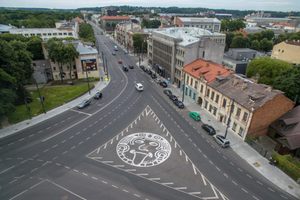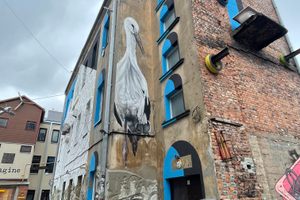About
In an unassuming Art Deco house in Lithuania’s second-largest city, visitors can learn the extraordinary story of Chiune Sugihara, the only Japanese national to be included in the Righteous Among the Nations (the list of gentiles who risked their lives to help Jews during World War II compiled by Yad Vashem). Before the war, this building hosted the Japanese consulate in Kaunas, which was at that time the provisional capital of Lithuania. In 1939 Chiune Sugihara, a diplomat, arrived in Kaunas to take up a position at the consulate—his time in Lithuania was to be short but dramatic.
In September of that year, Nazi Germany and the Soviet Union carved up Poland between them, and large numbers of Polish Jews fled to Lithuania, which was itself home to a sizable Jewish population. Most were understandably fearful about their future in the region, but now almost totally encircled by the Nazis and the Soviet Union, they seemed to have few options.
In April 1940, the Soviet Union agreed to let Jews pass through their territory, but they needed to have a destination after this in order to travel. Crowds assembled outside the Japanese consulate in Kaunas, hoping they would be granted a transit visa.
Sugihara had repeatedly been forbidden by his superiors in Japan to issue transit visas to anyone without a firm final destination, but he decided to defy orders. He collaborated with a Dutch diplomat, Jan Zwartendijk, who wrote on passports that no visa was necessary for the Dutch Caribbean island of Curaçao (deliberately leaving out the fact that permission for entry from the governor of the island was required). Together, they gave refugees a plausible route to escape Lithuania. But he had to work quickly: in June 1940, the Soviets formally occupied Lithuania, and ordered that all consulates in Kaunas be closed. Before being forced to leave his post in September, Sugihara wrote at least 2,000 visas by hand—perhaps as many as 10,000. Some versions of the story have him handing visas out of the window as his train pulled out of the station
Nazi Germany would invade and occupy Lithuania the following year, and over 90 percent of Lithuanian Jews were murdered in the Holocaust. Sugihara and Zwartendijk’s “visas for life” are thought to have helped thousands escape who would otherwise have perished.
Now a museum, the former consul building presents Sugihara’s eventful life and this terrible period in European history through photos and artifacts.
Related Tags
Know Before You Go
The Sugihara House is on Vaižgatvo gatvė, a residential street in an inner-city district of Kaunas. It’s around a 20-minute walk from Kaunas’s central thoroughfare, Laisvės alėja (although it is on a hill slightly above the city center, so expect a little climbing). Admission to the museum is 6 euros for adults and 3 euros for students, and its opening hours are Monday through Friday from 10:00 to 5:00 and Saturday through Sunday from 11 a.m.to 4 p.m.
On Laisvės alėja itself, visitors can see a light sculpture installed in 2018 to honor the equally brave actions of Jan Zwartendijk.
Community Contributors
Added By
Published
September 30, 2019

























